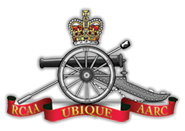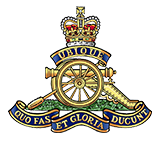Prelude to The Great War
1906 ended a long chapter in Canadian military history with the final departure of the Halifax and Esquimalt British garrisons. In addition to A and B Batteries, there were now five companies of Garrison Artillery in the Canadian Permanent Force. These were formed in 1905 and 1906 to take the place of the departing British in the garrisons at Halifax and Esquimalt – the last British troops to leave Canada. Many of the Gunners of the withdrawing British batteries took their leave from the Imperial Army to serve with the new Canadian units. In 1905 there was also a re-organization of the militia artillery grouping the batteries into ten brigades.
Among the most significant developments prior to the First World War from The Royal Regiment’s point of view was the acquisition of the large new training area at Petawawa. The familiar peacetime routine of summer practice camps for the militia artillery, presided over by the regular Gunners, once again became a feature of Canadian artillery training. Petawawa gave these practices a scope never before possible. The new 13 and 18 Pdrs came into service with modern recoil and sighting systems and, as noted above, indirect fire became a regular feature of practice.
While their numbers were small, the training of Canadian Gunners in the years preceding the war was essentially good. The equipment was up-to-date; indeed, the 18 Pdr would remain in service until early in the Second World War. Tactically, the size of the Petawawa ranges allowed scope for realistic manoeuvres. Technically, indirect fire procedures, with its requirements for meteorology and other technical considerations such as communications and range-finding, also became familiar to Canadians.
Changes in techniques and equipment, which followed the turn of the century, stemmed largely from experiences gained in South Africa. Previous to this campaign, guns had not normally been specifically allotted in support of a particular arm. With the re-designation of the Royal Canadian Field Artillery Brigade to the Royal Canadian Horse Artillery (RCHA) Brigade in 1905, British practice was adopted. It was decided that in future, horse artillery batteries would gallop with the cavalry while field batteries would support the more slowly moving infantry. Orders were placed in the United Kingdom for 13 Pdr Quick-Firing (Q.F.) guns for the RCHA, and 18 Pdr Q.F. guns for the Militia field artillery.
The term “quick-firing”, as employed at the beginning of the twentieth century, was applied to a gun that fired fixed ammunition and in addition was equipped with some effective form of recoil control. Fixed ammunition for guns had come into use in the early 1890’s, after the silk cloth bag that contained the charge (propellant) had been replaced in certain breech-loading guns by a brass cartridge case that expanded when fired and thus acted as a seal for the gases at the breech. The innovation made it possible for guns of small calibre to have the cartridge case joined to the projectile, and the resulting “fixed ammunition” materially speeded up the process of loading. The 13 and 18 Pdrs themselves were a composite of an Armstrong wire-wound gun (barrel and breech) mated to a Vickers recoil system, and sighting and elevation gear made in the Royal Ordnance factories. Before the war, both guns fired only shrapnel, which was soon to prove a serious shortcoming.


